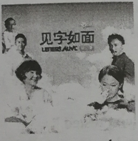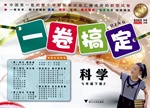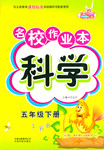题目内容

Nowadays, phone calls and messages help us communicate with others more often. It means that we seldom write letters now. But a TV show. Letters alive, is bringing back this old habit.
Letters Alive invites famous actors and actresses but there are no funny jokes or different competitions. Instead, only one person walks up to a microphone and reads a letter. The letters were written by people from different times in history. For example, in one episode(集), they read a letter written by the famous writer Xiao Hong to her younger brother in 1941. The letter shows that Xiao Hong missed her brother so much and had great hopes for his future.
“Every letter opens another world for us, " said Guan Zhangwen, the director of the TV show. “It seems that we can experience the real lives and feelings of the writers". Since its first episode on December 5, 2016, Letters Alive has been widely praised. Many audiences(观众)say that it has provided a breath of fresh air to today’s TV shows.
Besides Letters Alive, some other cultural TV shows have also attracted(吸引)Chinese audiences. They include the Chinese Poetry Conference, a traditional Chinese poetry competition and Readers, a program that invites people to read poems and articles they like or wrote. It suggests that cultural values and true feelings are becoming our interest.
1.Letters Alive, a TV show, invites famous people to______.
A. read and share letters B. tell audiences jokes C. enter different competitions
2.How many TV shows are mentioned in the passage?
A. Two B. Three C. Four
3.Chinese audiences _____ the TV shows mentioned in the passage
A. highly praise B. don’t mind C. show no interest in
4.This article is probably taken from the section of_____ in a newspaper
A. Sports News
B. Culture and Entertainment
C. Education and Science
5.According to the passage, which of the following is RIGHT?
A. Letters Alive is not popular enough to attract audiences
B. Chinese Poetry Conference invites people to read poems and articles
C. We can experience the real lives and feeling of the writers by reading letters.
 课堂小作业系列答案
课堂小作业系列答案 黄冈小状元口算速算练习册系列答案
黄冈小状元口算速算练习册系列答案 成功训练计划系列答案
成功训练计划系列答案 倍速训练法直通中考考点系列答案
倍速训练法直通中考考点系列答案 一卷搞定系列答案
一卷搞定系列答案 名校作业本系列答案
名校作业本系列答案In order to learn how the students in our school spend money, we made a survey(调查) by asking them some questions. First, we asked them how much money they spent last month. And then we asked how much money they spent on junk food, books, movies, computer games, phones, transportation(交通) and other things last month. Our math teacher helped us make a graph(图表) of their answers as follows.
Total (one month): about 100 yuan per student | |||||||
Junk food | 22% | ||||||
Books | 6% | ||||||
Movies | 18% | ||||||
Computer games | 18% | ||||||
Phones | 10% | ||||||
Transportation | 14% | ||||||
Others | 12% | ||||||
阅读以上内容, 并完成下面的调查报告, 每空不超过两词。
In our school, each student spent about 1. yuan on average(平均) last month. According to the graph made by our 2. teacher, we know how much money the students spent on different things in our school. As the graph shows, they spent most on 3., covering 22% of all. It was followed by computer games and movies. Each of them was 4.. But to our surprise, the students spent 5. on books, only 6%.


 B.
B. C.
C. D.
D.